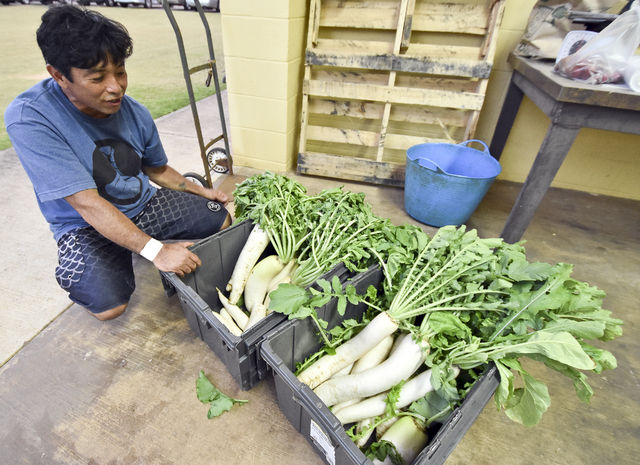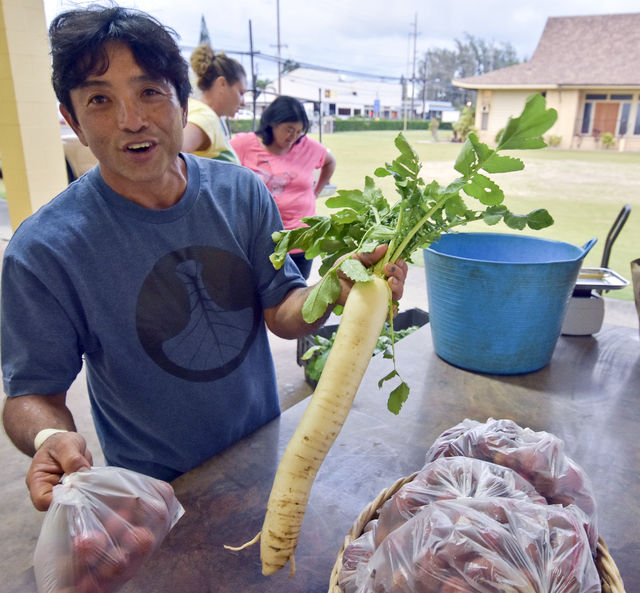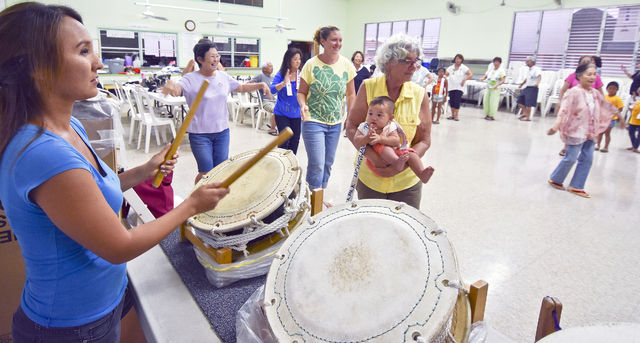KAPAA — At eight months of age, Florence Toyofuku is ready for bon dance which starts Friday at the Waimea Shingon Mission. “This is her first happi coat,” said Bryna Storch, Florence’s mom. “We’re here because Florence likes the music,
KAPAA — At eight months of age, Florence Toyofuku is ready for bon dance which starts Friday at the Waimea Shingon Mission.
“This is her first happi coat,” said Bryna Storch, Florence’s mom. “We’re here because Florence likes the music, she likes the people, and she likes the drums, or taiko.”
Florence and her parents, Cal Toyofuku and Bryna, were among the more than 50 people who turned out for bon dance practice at the Kapaa Hongwanji Mission on the final week leading to the first obon festival this weekend.
“In many ways, this practice is as much fun as the real bon dance,” Bryna said. “We have the taiko, we have materials being distributed by Pearl Shimizu, the instructor, and we even brought daikon (Japanese term for raddish) and lychee.”
Owners and operators of Lanipo farms in Puhi, Bryna said Cal donates daikon to both the West Kauai Hongwanji, Hanapepe Temple (July 31, Aug. 1) and the Kapaa Hongwanji (June 26 and 27) for their food booth and country store sales.
“The birds, chickens and pigs eat these,” Toyofuku said. “Better I let the people eat. And they can donate to help the churches.”
Isabel Storch, Bryna’s mom, was taking Florence through the paces, keeping time with the music, taiko and the field of dancers.
“Isabel takes care of the markets,” Bryna said. “That way we can do what we like to do – work on the farm. We do visit her at the Kauai Community Market where it’s a lot of fun meeting all the people and enjoying the food.”
Bryna said they spent last year growing 13 different types of daikon to find one which will do best in Kauai’s climate.
“There’s the Korean type, the Chinese type and the Japanese type,” Toyofuku said. “The Korean type has the spiciness, or bite, that people like. The Chinese type looks very similar to the Korean. except it’s purple instead of white. It also is not as spicy, and unlike the Korean type, the spiciness goes away quicker.”
Toyofuku said the Japanese type, preferred by the churches for creating takuwan, or pickled daikon, is long and mild.
His choice was based on a recommendation from a chef in Sam Choy’s kitchens who said the daikon can grow as long as four feet and splits into legs similar to pant legs.
“Even Florence knows the difference,” Toyofuku said. “She munches away on the greens, and knows the difference, selecting only the ones she can handle. At the markets, there are people who tell us to harvest early because they enjoy the greens. If we let the crops go to maturity, it becomes too spicy, or hot.”
The lychee is “just going off,” Toyofuku said. “My eyes can’t see too good with this scale. We say its two pounds, but my eyes no can see straight so everybody gets more.”
Waimea Shingon Mission, 9770-A Pule Road, opens its doors Friday and Saturday with the first obon dance starting at 7:30 p.m. each night.




